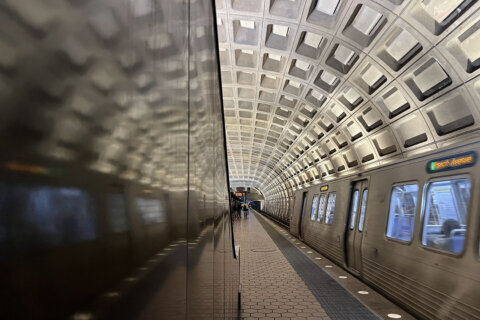WASHINGTON — More than eight years after a deadly Red Line crash led Metro to turn off smoother automatic train operation, agency documents indicate there is a long way to go before the system turns back on — if it is reactivated at all.
Documents prepared for a Metro Board committee meeting Thursday acknowledge many maintenance and rider benefits from the automated system, but raise potential concerns about turning it back on. Those concerns are due to be addressed by an outside consultant starting next year.
“Manual operation is less efficient and contributes an inconsistent, ‘jerky’ ride for passengers due to sudden increases in speed and sudden braking. This also creates added wear on train components, thus increasing maintenance costs,” the documents said.
However, manual operations have been in place for so long that many train operators and mechanics have never known anything else, and the equipment needs to be checked to ensure it works properly in the Rail Operations Control Center, on the tracks and on trains.
The consultants also must ensure that the years of automatic train control system upgrades done since 2009 “are compatible with how the system functions” and that there are no lingering problems from incidents before the 2009 Red Line crash. Metro managers are also concerned about how the system could interact with track worker protection rules implemented after a series of sometimes fatal errors.
If the system can work, a second phase of the review would consider whether the switch is the right move, update operating procedures, and develop new training materials.
A return to automatic operations has been officially under review at least intermittently for years.
In addition to the smoother rides, automatic operation can also control the opening of train doors. Under manual operations, train operators are forced to pause for a few seconds before opening the doors in an effort to keep the doors from opening on the wrong side of the train.
Beyond cutting down on that extra time spent sitting, automatic operation can also help with more even train spacing, so riders have more consistent waits across an entire line.
The automatic system also reduces the risk of trains running red signals.
In April 2015, Metro announced it would begin a trial of a return to automatic operations on the Red Line, but the test was quietly stopped soon after it began “due to more pressing concerns.” That testing was only for eight-car trains in one direction.
Scrap it?
While Metro reviews the existing system, the agency is considering an entirely different technology for train control that would be based on communication between trains rather than the current track-circuit system. The newer technology could increase the number of trains that can run on a given stretch of track, but would likely require significant new investment.
Red Line trains are being slowed at the start of this week by one of those pressing concerns. While Takoma Station reopened Monday morning after more than two weeks of track work, Metro said trains will be slowed between Fort Totten and Silver Spring as late as Wednesday to allow the fixes to settle in.






